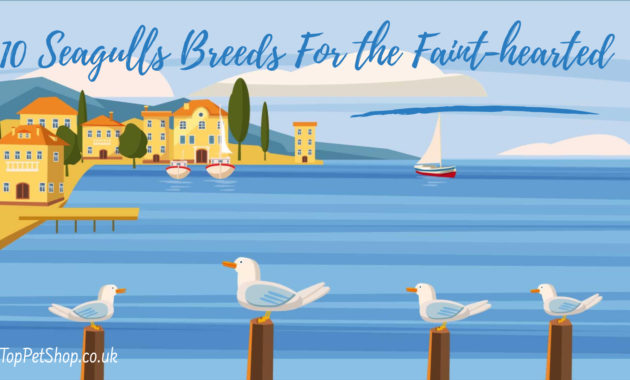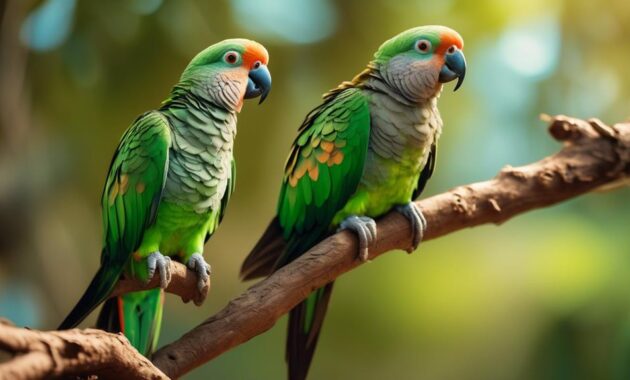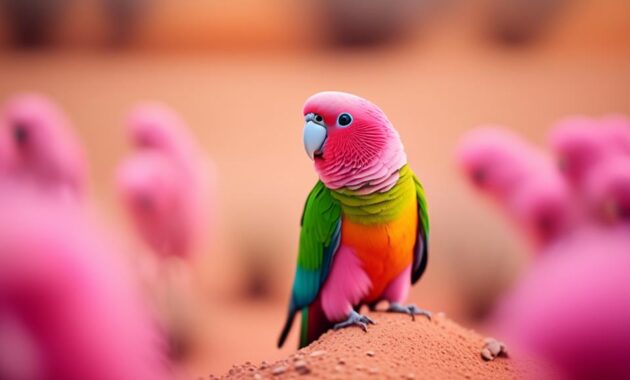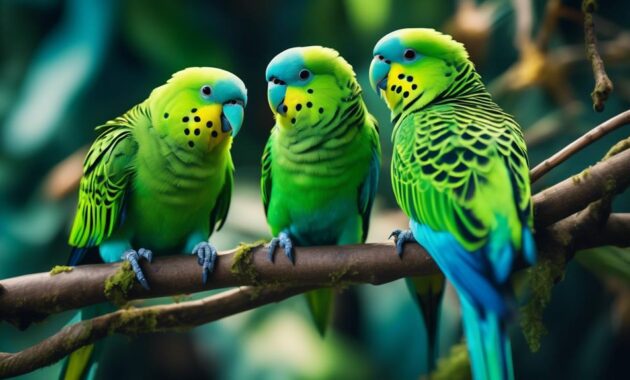
Are you curious about the captivating world of the Illigers Macaw, a remarkable parrot species known for its mischievous and affectionate nature? Step into their enchanting realm as we uncover the unique traits and challenges faced by these vibrant birds.
From their playful antics to their deep bonds with their owners, the Illigers Macaw promises to bring joy and laughter to your life. But there’s more to this endearing parrot than meets the eye.
Join us on this journey as we explore their distinctive physical features, their native habitat, and the efforts being made to protect their endangered status.
Get ready to be amazed by the Illigers Macaw, a mischievous and affectionate parrot fighting for survival.
Key Takeaways
- Illigers Macaw is classified as an endangered species due to habitat loss and illegal capture for the pet trade.
- Their native habitat in Brazil, Paraguay, and Bolivia is being threatened by industrialization and deforestation.
- Conservation efforts include habitat preservation and anti-poaching laws, as well as promoting sustainable farming practices.
- Illigers Macaws are known for their playful, affectionate, and mischievous nature, making interactions with them delightful and filled with laughter.
Illigers Macaw: An Endangered Species
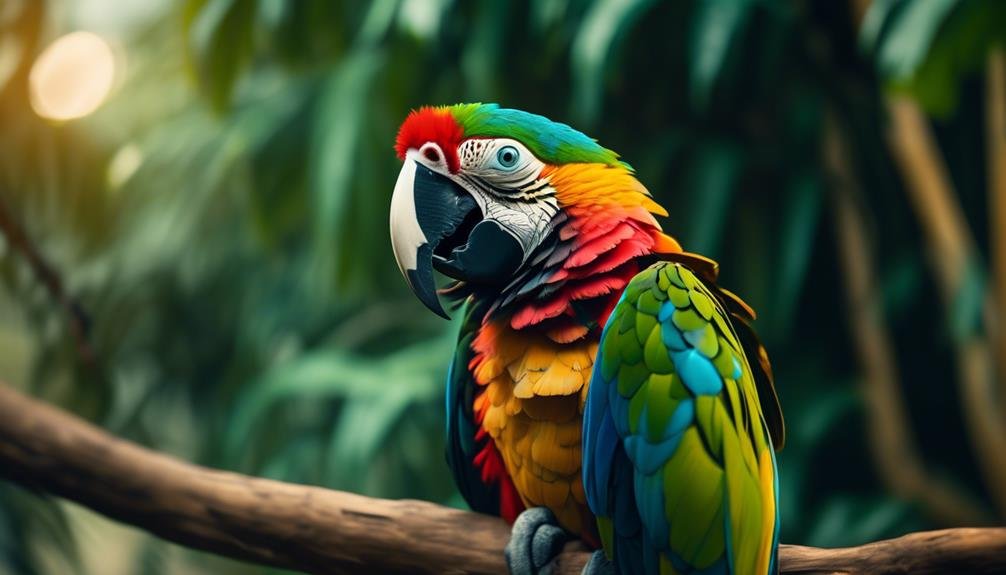
The Illigers Macaw, a beautiful and charismatic parrot, is sadly classified as an endangered species. This means that their population is declining rapidly, and they’re at risk of extinction.
The main reasons for their endangered status are habitat loss and illegal capture for the pet trade. The Illigers Macaw is native to the lower part of Brazil, with smaller populations found in Paraguay and Bolivia. They prefer deciduous and gallery forests as their natural habitat. However, industrialization and forest destruction have greatly reduced their available habitat.
Additionally, farmers sometimes kill these parrots because they see them as pests. It’s crucial that we take immediate action to protect and conserve the Illigers Macaw before it’s too late.
Physical Characteristics of Illigers Macaw

With its distinctive stubby look, the Illigers Macaw stands out among other macaw species. This medium to large-sized parrot has an average length of up to 17 inches, making it visibly smaller than most macaws. Illigers Macaws require a lot of space and exercise due to their energetic nature. To give you a clear idea of their physical characteristics, here is a table summarizing their size, colors, and sounds:
| Size | Colors | Sounds |
|---|---|---|
| Up to 17 inches | Green; blue & red details | Vocal, Chirping, Noisy |
In terms of appearance, Illigers Macaws have a green plumage with beautiful blue and red details. When it comes to sounds, they are moderately noisy, producing a variety of calls. Despite their mischievous behavior, they are not as noisy as some other macaw species.
Interacting With Illigers Macaw: Affectionate and Mischievous Personalities

Interacting with an Illigers Macaw reveals an affectionate and mischievous personality. Here are three key characteristics that define their unique behavior:
- Playful antics: Illigers Macaws are known for their mischievous nature. They love to explore their surroundings, investigate new objects, and engage in playful activities. Be prepared for their curious nature as they may try to steal your belongings or playfully nip at your fingers.
- Social and affectionate: These parrots thrive on social interaction and form strong bonds with their owners. They enjoy being part of the family and love to cuddle, preen, and shower their owners with affectionate gestures. They’ll eagerly seek your attention and can become quite demanding in their quest for affection.
- Goofy sense of humor: Illigers Macaws have a playful sense of humor and enjoy entertaining their owners. They’re known for their silly antics, such as mimicking sounds, dancing, and even playing tricks on their human companions. Their mischievous personality adds a fun and light-hearted element to your interactions with them.
Interacting with an Illigers Macaw is a delightful experience filled with affection and laughter. Just be prepared for their mischievous nature and embrace the joy they bring into your life.
The Native Habitat of Illigers Macaw
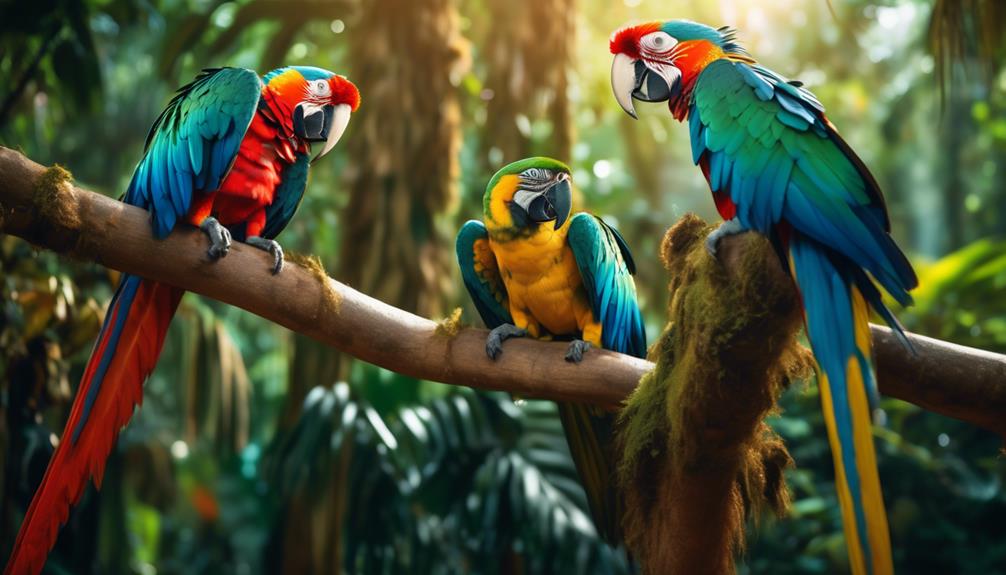
Nestled in the lower part of Brazil, Illigers Macaws thrive in their native habitat of deciduous and gallery forests. These vibrant parrots prefer the lush vegetation and diverse tree species found in these forest types.
The deciduous forests, characterized by trees that shed their leaves seasonally, provide the macaws with an abundance of food sources such as fruits, nuts, and seeds. Gallery forests, on the other hand, are narrow strips of woodland that grow alongside rivers or streams, offering the macaws a reliable water source and a habitat rich in insects and small vertebrates.
These unique habitats provide the Illigers Macaws with the perfect environment to forage, socialize, and nest, making them highly adapted to their surroundings. However, due to industrialization and forest destruction, their native habitat is rapidly diminishing, threatening the survival of this magnificent species.
Threats to the Survival of Illigers Macaw
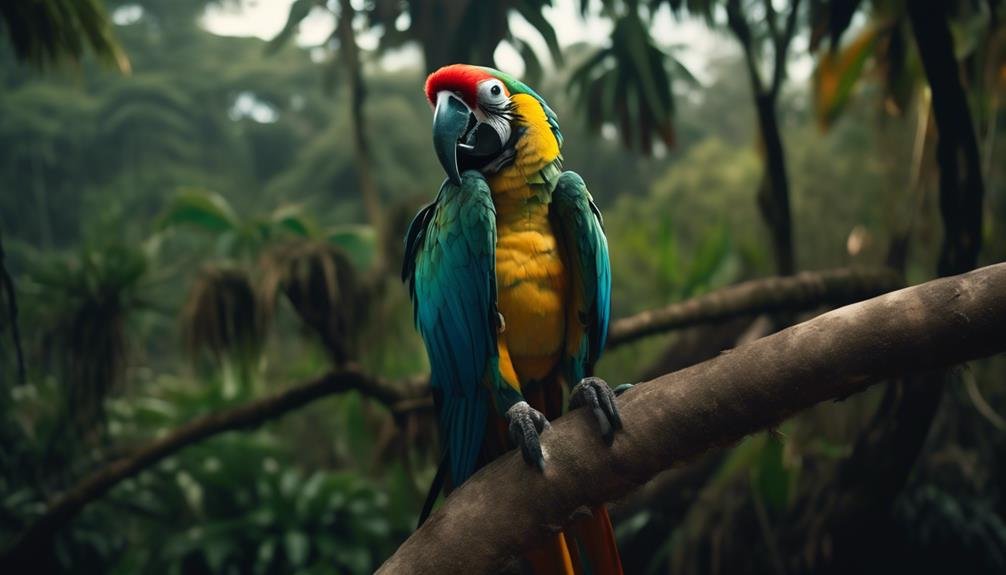
Unfortunately, the survival of Illigers Macaw is threatened by various factors. These threats pose significant challenges to the population of this endangered species:
- Habitat Loss: Industrialization and deforestation have resulted in the destruction of the Illigers Macaw’s natural habitat. The clearing of forests for agriculture and urban development has significantly reduced their available breeding and foraging grounds.
- Illegal Capture and Trade: The demand for exotic pets has led to the illegal capture and trade of Illigers Macaws. These birds are often taken from the wild and smuggled into the pet trade, causing a decline in their population.
- Conflict with Farmers: Illigers Macaws occasionally come into conflict with farmers, as they may damage crops or raid fruit orchards. In some cases, farmers resort to killing these birds to protect their livelihoods, further endangering the species.
It is crucial that immediate action is taken to address these threats and ensure the survival of the Illigers Macaw. Efforts such as habitat conservation, stricter enforcement of anti-poaching laws, and promoting sustainable farming practices can help protect this magnificent parrot.
Illigers Macaw: A Unique and Distinctive Appearance
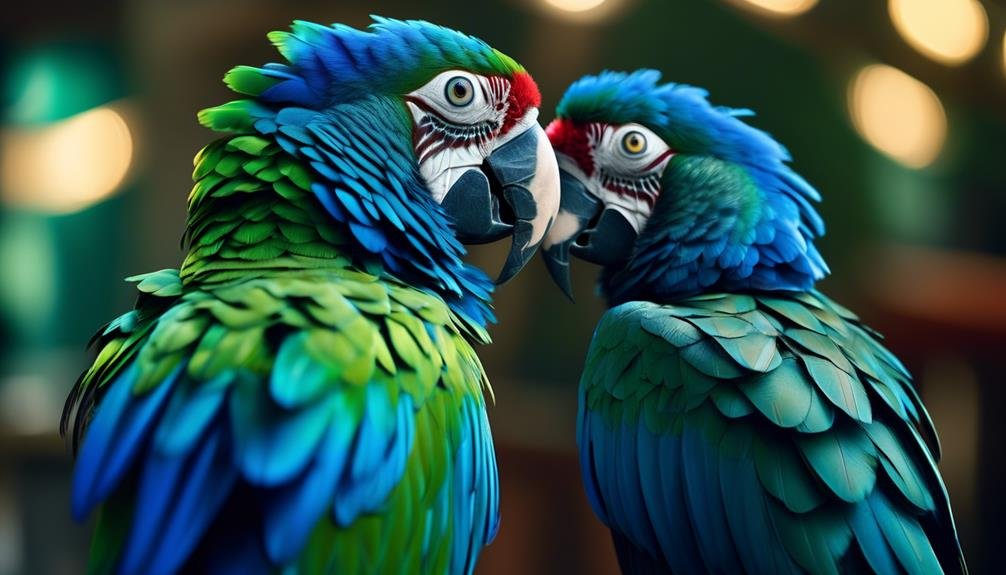
The distinctive appearance of the Illigers Macaw sets it apart from other macaw species, making it a visually captivating parrot. With an average length of up to 17 inches, it’s visibly smaller than most macaws, giving it a unique and stubby look. Despite its smaller size, it’s considered medium to large in size among parrots.
The Illigers Macaw is known for its vibrant colors, with green as the primary color and blue and red details adding to its beauty. Its feathers are a mix of these colors, creating an eye-catching display. The combination of its distinctive size and stunning coloration makes the Illigers Macaw truly stand out in the world of parrots.
Communication and Sounds of Illigers Macaw

To understand the communication and sounds of the Illigers Macaw, it’s important to recognize its vocal abilities and distinct calls. This parrot species has a moderate level of noise and isn’t as noisy as some other macaw species.
Here are three key points about their communication:
- Chirp and mumble on their own: Illigers Macaws have a habit of chirping and mumbling to themselves, which is their way of expressing their thoughts and feelings.
- Produce a variety of calls: These parrots are capable of producing a wide range of calls, from soft and melodic to loud and raucous. Each call has a specific meaning and purpose, allowing them to communicate with their flock members.
- Attention can be given to playing and wooden toys: Illigers Macaws are known to be playful and curious. They enjoy interacting with toys, especially those made of wood, which can provide them with mental stimulation and entertainment.
Caring for Illigers Macaw: Space and Exercise Requirements

When caring for Illigers Macaws, it’s essential to provide them with ample space and opportunities for exercise. These parrots are energetic and social creatures, so they need room to spread their wings and explore their surroundings.
A cage that’s at least 3 feet wide and 4 feet tall is recommended, as it allows them to move around comfortably. Additionally, Illigers Macaws should have access to a play area outside of their cage, where they can stretch their wings and engage in physical activities.
Providing them with plenty of toys, ropes, and perches will also help keep them mentally and physically stimulated. Regular exercise is crucial for the well-being of Illigers Macaws, so make sure to dedicate time each day for play and interaction with your feathered friend.
Frequently Asked Questions
What Are the Specific Threats That Have Led to the Endangered Status of the Illigers Macaw?
The specific threats that have led to the endangered status of the Illigers Macaw include industrialization, forest destruction, illegal capture, and killings by farmers. These factors have contributed to the decline in their population.
How Do Illigers Macaws Communicate With Each Other in Their Native Habitat?
In their native habitat, Illigers Macaws communicate with each other through a variety of calls, chirps, and mumbles. They also pay attention to playing and wooden toys, but they are not as noisy as some other macaw species.
What Are Some Common Misconceptions About Illigers Macaws?
Some common misconceptions about Illigers macaws are that they are noisy and aggressive. In reality, they are affectionate and playful birds. They require a lot of space and exercise, but they make great companions.
Can Illigers Macaws Be Kept as Pets in Urban Areas With Limited Space?
Yes, Illigers macaws can be kept as pets in urban areas with limited space. They are smaller in size compared to other macaws and require exercise. However, ensure they have enough space and mental stimulation.
Are There Any Conservation Efforts Currently in Place to Protect the Illigers Macaw Population?
Yes, there are conservation efforts in place to protect the illigers macaw population. Organizations work to prevent habitat destruction, illegal capture, and killings, aiming to ensure the survival of these beautiful parrots.
What Makes Illiger’s Macaw Endangered and How Can We Protect Them?
Illiger’s Macaw is endangered due to habitat loss and trapping for the pet trade. To protect them, we need to enforce stricter laws against illegal trapping and work on conserving their natural habitat. It is crucial to discover the hyacinth macaw‘s nesting and foraging sites to better understand and protect Illiger’s Macaw.
Conclusion
In conclusion, the Illigers Macaw is a fascinating and endangered species with a mischievous and affectionate nature. These social creatures bring joy and laughter to their owners, but unfortunately, they face numerous threats in their natural habitat.
It’s crucial that we make efforts to protect and conserve this unique parrot species. By understanding their distinctive characteristics and supporting conservation efforts, we can ensure the survival of the Illigers Macaw for future generations to enjoy their playful companionship.

